ARCHIVE · 2015
VANJA RADAUŠ (1906 – 1975): FROM LOVE TO DEATH
A Retrospective Exhibition Commemorating the 40th Anniversary of the Death and the 110th Anniversary of the Birth of the Artist
November 20th , 2015 – January 10th, 2016
Author of the exhibition: Davorin Vujčić, MA, Gallery of Antun Augustinčić, Klanjec
Curator: Rozana Vojvoda, PhD
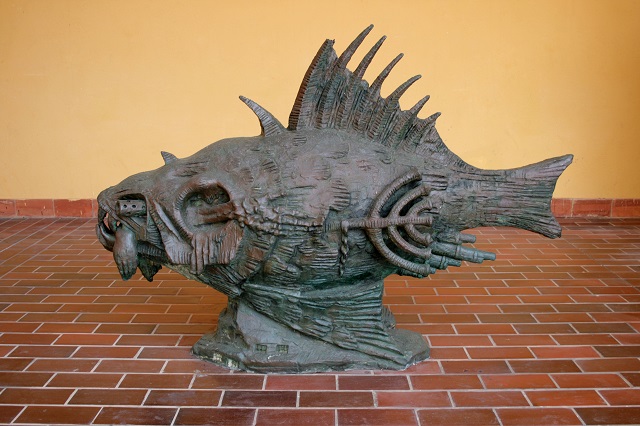
Fish (from the series Prisons and Camps), 1969, bronze
An artist of both temperament and skill, Vanja Radauš was a creator of inexhaustible interests, he was learned and a fierce opponent in an argument, one of our most prolific 20th century artists. In this retrospective exhibition, the Dubrovnik Museum of Modern and Contemporary Art brings together a cross section of Radauš’s work; its opening in 2015 will commemorate the fourth decade since his death, and its close in 2016 the 110th anniversary of his birth.

Convict, 1940, terracotta
This exhibition numbers around 150 works (sculptures, medals, drawings) borrowed from a wide range of public cultural institutions (Municipal Museum Vinkovci, Gliptoteka HAZU, Archaeological Museum in Zagreb, Croatian Historical Museum, Croatian Conservation Institute, Modern gallery in Zagreb, Gallery Klovićevi dvori) as well as from the private owners. One of the curiosities of the exhibition is that some sculptures are represented to the audience for the first time.

Woman Striding with Fish, 1966 (cast 1995), bronze
The sculptures belong to all the phases of his oeuvre and include the works done in thirties and forties, post-war series Typhus Sufferers (1958), Panopticum croaticum (1959-1961), Man and Karst (1961-1964), Bloody Carnival (1965-1966), the abstract forms that appeared in Radauš’s oeuvre in the mid-60s, series Prisons and Camps that grew out of organic and abstract forms and the works from his last years when he revived his memories of childhood and Slavonia.

Slavonian Woman, 1953, stone
Vanja Radauš left a powerful mark on sculpture, in a range of genres and techniques including medals, small-scale sculptures in terracotta, plaster and stone, wax and bronze, as well as monumental sculptures. In his series of sculptures, he opened up vistas previously unknown and is with good justice considered one of the most significant figures in Croatian sculpture of the 20th century.

Prospecutor (from the series Panopticum coaticum), 1959-1961, synthetics
Biography
Ivan (Vanja) Radauš was born on April 29 in Vinkovci, where he spent his childhood. He studied sculpture at the Academy of Fine Arts in Zagreb from 1924 to 1930 (for the first four years he was taught by Rudolf Valdec and Robert Frangeš-Mihanović, from 1928 to 1930 by Ivan Meštrović). In June 1930 Radauš took his degree in sculpting and in the autumn travelled to Paris. Socially sensitive and committed, in 1932 Radauš took an active part in the Zemlja Artists Association, which was to have far reaching implications for his artistic development.
From 1940 – 1943, Radauš worked as a job as teacher at the Trades and Crafts School in Zagreb. When the World War II in which he was actively involved was over, Radauš became a part of the nomenclature [socialist Establishment], with appropriate roles and duties. In 1945 he was appointed professor at Zagreb’s Academy of Fine Arts (from 1954 to 1956 and from 1960 to 1962 he was the president of the institution, in 1963 its dean). In 1947 he became a regular member of the Yugoslav Academy of Arts and Sciences and was given the title master sculptor, and put at the head of the newly built master workshop for sculpture at Zmajevac in Zagreb. On April l27, 1975, he committed suicide in his office at Zmajevac, shooting himself with a pistol in the heart. The circumstances surrounding the act were not completely explained, which excited various interpretations and suspicions that are still alive today.
VLAHO BUKOVAC
FROM PRIVATE COLLECTIONS
12.11. - 27.12.2015.
Curator: mr.sc. Vesna Delić Gozze
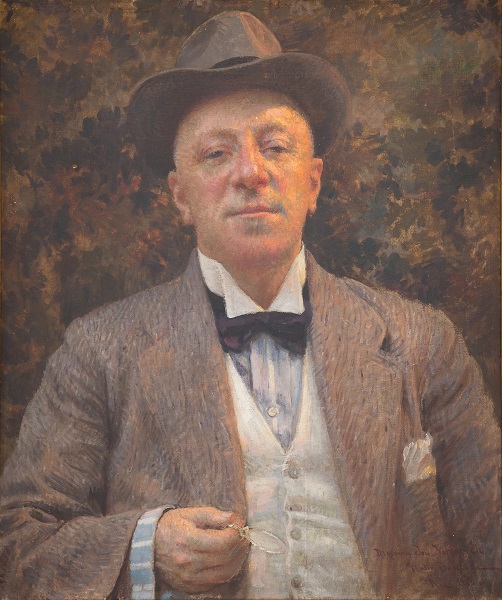
Portret Iva Vojnovića, Prag, 1918.
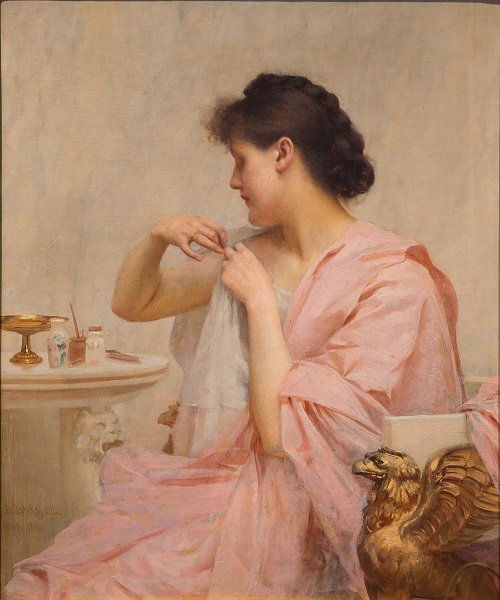
Patricijka II (Toaleta Atenjanke), Pariz, 1890.

Djevojka riđe kose, oko 1913.
Bukovac, in one sense, was a camera of a painter: he was capable of transferring to the canvas even the tiniest individual features of the subject – in the proper proportions too – and then again, more than that: he was an observer who easily understood other beings. Without that he would not be what he is – the best Croatian master in this genre, and one of the very best European portrait artists of his time.(...) Only in the very earliest, amateur or youthful portraits of family members can a certain effort to achieve a likeness be sensed. From the moment he made his debut in the 1882 Salon, his brush no longer had any problems with mimetic imaging of the model; from then to the end he devoted himself with incredible leisureliness and self-confidence to the painting of integral portraits that were, all in all, particularly fine and extremely complex nexuses of psycho-physical characteristics of the subjects in the eyes, experience and spirit of the painter.
Igor Zidić
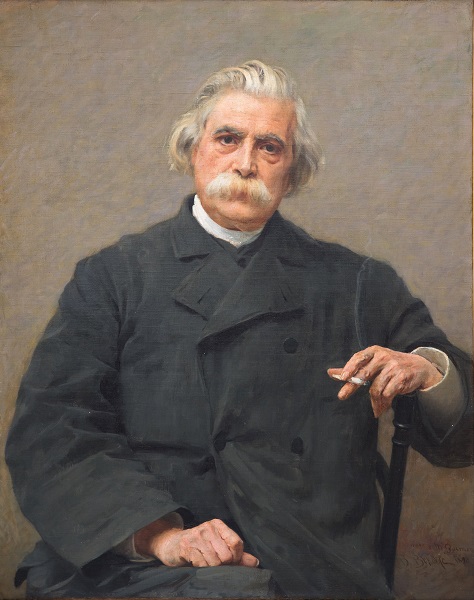
Gospodin sa cigaretom, Pariz, 1890.
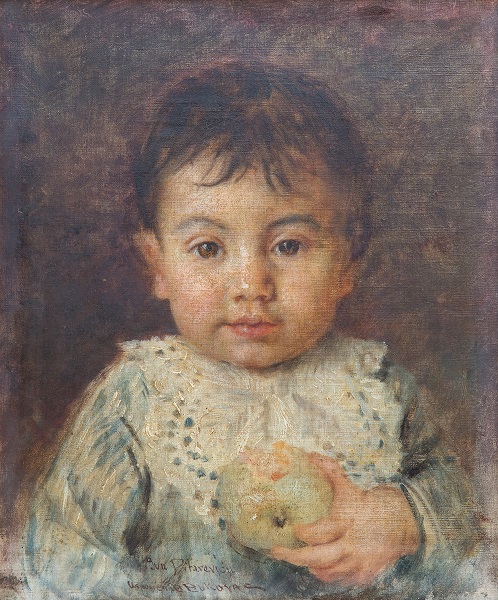
Portret Iva Pitarevića, Dubrovnik, 1891.
Biography:
Vlaho Bukovac was born on July 4, 1855 in Cavtat. In 1873 he left for Peru with his brother, Jozo. There he successfully earned money painting train cars, but after just one year, he left for California in search of better work. In San Francisco, he began his “amateur” career in painting, as well as his first lessons in art. During his short time in Cavtat, Bukovac prepared for his artistic training by painting portraits of his family. In 1877, under the influence of the Dubrovnik poet, Medo Pucić, he changed his last name, Fagioni, to the Croatian, Bukovac. With the help of Medo Pucić in 1877, Bukovac set off for Paris. Thanks to the small painted study, “Hand,” he was accepted at the École des Beaux Arts in the already overfull class of Alexandre Cabanel. In 1878, he exhibited at one of the most important international exhibitions – the Paris Salon. Until 1893, Bukovac would exhibit various paintings, especially nudes, portraits and Montenegrin motifs. Beginning in 1886, thanks to a relationship with the English art dealers, the Vicars brothers, he made several visits to England, and left a great number of portraits there. With his arrival in Zagreb in 1893, Bukovac became the central figure and founder of a Croatian art scene. He was the initiator of artistic events and, by influencing a generation of young artists, participated in the creation of the foundations of Modern Art in Croatia.. In 1897 Bukovac roused the younger artists to secede from the conceptually-outdated Society of Art and founded the Society of Croatian Artists, in keeping with the spirit of the time. In 1898 this society organized a large exhibition, the “Croatian Salon,” which was the first representative presentation of Croatian Artists in the Art Pavilion. In 1900, Bukovac exhibited at the Exposition Universelle in Paris, and in 1901 at the Venice Biennial for the second time. In 1902 he left for Vienna where he had a large solo exhibition. During his short stay in Vienna, Bukovac received an invitation from Prague to fill an open position as professor at the Academy of Fine Arts. He spent the last twenty years of his life in Prague dedicating himself to pedagogical work, spending most summers in Cavtat, the place of his birth. He had his first solo exhibition in Prague in 1915. During the First World War, Bukovac wrote his autobiography, published under the name Moj život in 1918 in Zagreb. He died on April 23, 1922 in Prague. He was buried in his native Cavtat.
The Ufemat Series
Anabel Zanze
Exhibition curator: Vesna Delić Gozze, MSc
15.10 - 15.11.2015

Ufemat Croatia III, ulje na platnu, 2015.
MARNIX VAN HOE:
Every year Ufemat (European Association of National Builders' Merchants Associations and Manufacturers) organises a congress in a major European City. In recent years, we have been guests in Bratislava, Brussels, Copenhagen, Krakow, Milan, Paris, Valencia, Venice, and Vienna.
Every year, we endeavour to give a local artist the opportunity to participate in our project. In the past we had the pleasure to work with Alain Bertrand (France), Maria Kiesner (Poland), Griffo (Belgium) and many others. This time we decided to collaborate with the artist Anabel Zanze. It is true that art and business do not often go together, but cooperation with Anabel Zanze, who is neither a mainstream nor a figurative artist, rather a painter of conceptual expression, confirms our openness to new artistic practices and the specific individuality of an artist.

Ufemat Croatia II, ulje na platnu, 2015.
ANABEL ZANZE:
Three days after the opening of my extensive exhibition Citations in the Museum of Modern and Contemporary Art in Dubrovnik (my native city), on Monday, April 13, in the morning (when I had already returned to Zagreb), I had a call from Mr Marnix Van Hoe, secretary general of Ufemat, asking me to contribute through my art to the 57th Ufemat Annual Conference, to be held in Dubrovnik in October, 2015. In precise terms, Mr Van Hoe described to me the objectives of Ufemat and I also found much about it on the Web site of the association: architecture, an aware attitude to the environment and improvement of the legislative in the construction industry are the principal concerns of the organisation.
From the very first moment, my instinct told me that I would be able to adhere most fully to my principles if I managed to compose all the parts into a single ideational and performed whole. I determined, then, to write out on all the paintings texts from the area of architecture. For example, for the sponsor Mapei there were historical facts about the architecture of Milan and Italy; for JCB, excerpts from Pevsner’s The Englishness of English Art; on the Wienerberger painting there are one after another names of famous 20th century architects; on the Xella the industrial revolution is referred to and the mass building of railway lines all over Europe. On the Velux painting I adduce house construction problems; the Fakro painting in its textual fragments juxtaposes the concepts of the modern and the post-modern; finally the Ufemat picture is dedicated to the Bauhaus of Walter Gropius and others. By choosing the colour of the ground and the different letters, playing with kinds of fonts, different textures, line spacing, the writing out of the letters, either casually or rather austerely, and other visual elements I endeavoured to retain – and perhaps managed to succeed – the spirit of connectedness in each of the paintings.
 Ufemat Croatia IV, ulje na platnu, 2015.
Ufemat Croatia IV, ulje na platnu, 2015.
IGOR ZIDIĆ:
But best known of all are the painter’s densely written paintings/pages, which constitute texturological surfaces, on occasions of common and sometimes of very distinctive and individual fonts that bear, always in the fragments, significant textural contents/messages: of celebrated writers in art discipline (theorists, historians, critics) or of the artists themselves (painters, persons of letters). The artist believes that by the mere copying of such paragraphs a certain positive energy is also transferred.
It is also understood that she does not write out the socially and professionally positive texts that, after all, those in the Ufemat Series all are, primarily for them to serve for individual or group readings, to serve as some form of individual or social therapy. In essence, these texts are textual, graphemic, paintings: they emanate pictorial energy, and the textual contents are a good basis for the picture, only, just as the ground on which we want to build – unlike a substrate that is waterlogged or subject to slippage – has to be solid. The text, regularly, reveals her stimuli more than it binds the viewer, for Anabel offers this viewer, above all, with the colour, figures, fonts, sizes, the relations of these elements, the plasticity of the application, the specific textures, a painting, and the specificity of this painting can be, unlike the text, be perceived in an instant. This object is never neglected in her work.
 Ufemat Croatia VI, ulje na platnu, 2015.
Ufemat Croatia VI, ulje na platnu, 2015.
BIOGRAPHY
Anabel Zanze was born in 1971 in Dubrovnik, where she attended elementary school as well as maths and science high school. In 1991 she enrolled in the Graphic Department of the Academy of Fine Arts in Zagreb, taking her BFA in the class of Ante Kuduz in 1996. Between 1998 and 2004 she taught visual culture in the Marin Držić Elementary School in Dubrovnik. Since 2004 she has lived and worked in Zagreb. She is a member of the Croatian Association of Visual Artists (HDLU) and Croatian Freelance Artists’ Association (HZSU).
Anabel Zanze has shown her work at twenty three solo shows (in the most important Croatian museums and galleries of modern and contemporary art) and a large number of collective exhibitions. Her works are to be found in the holdings of: the Modern Gallery in Zagreb, the Museum of Fine Arts in Osijek, the Dubrovnik Museum of Modern and Contemporary Art, the Vjekoslav Karas Gallery in Karlovac Municipal Museum, the Rovinj Heritage Museum, the Široki Brijeg Museum – Franciscan Gallery, the Juraj Šižgorić Public Library in Šibenik and Hypo Group Alpe Adria in Zagreb and a number of Croatian and foreign private collections. She was included in the highly significant book of Sandra Križić Roban Hrvatsko slikarstvo od 1945. do danas. Odgovornost slike u vrijeme nestrpljivog pogleda (Croatian Painting since 1945. Responsibility of the Image in the Time of the Impatient Look).
 Ufemat Croatia, oil on canvas, 2015.
Ufemat Croatia, oil on canvas, 2015.
Desire for Freedom: Dosije Bosna i Hercegovina
The exhibition has been organized in collaboration with Art Gallery of Bosnia and Herzegovina
Gordana Anđelić Galić
Maja Bajević
Igor Bošnjak
Mladen Miljanović
Damir Nikšić
Nebojša Šerić-Šoba
10th October - 15th November 2015
Authors of the exhibition: Ivana Udovičić i Maja Abdomerović
 Igor Bošnjak, BHS, 2010., video 2’30’’
Igor Bošnjak, BHS, 2010., video 2’30’’
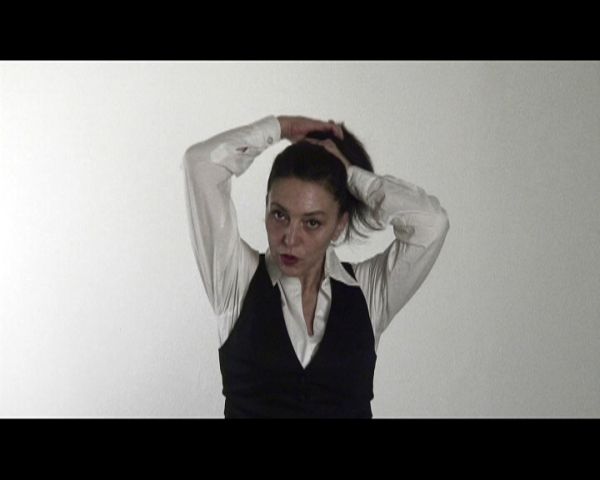
Maja Bajević, HOW DO YOU WANT TO BE GOVERNED AFTER RAŠA TODOSIJEVIĆ „WAS IST KUNST”, 1976., 2009. video 10’35’’
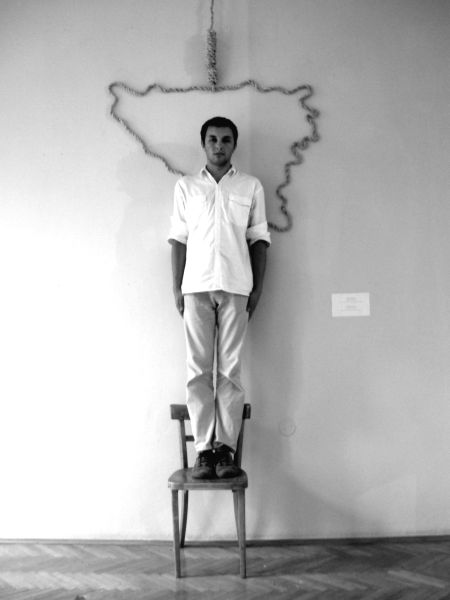 Mladen Miljanović, DOBRODOŠLI, 2006. instalacija, konopac, stolica
Mladen Miljanović, DOBRODOŠLI, 2006. instalacija, konopac, stolica
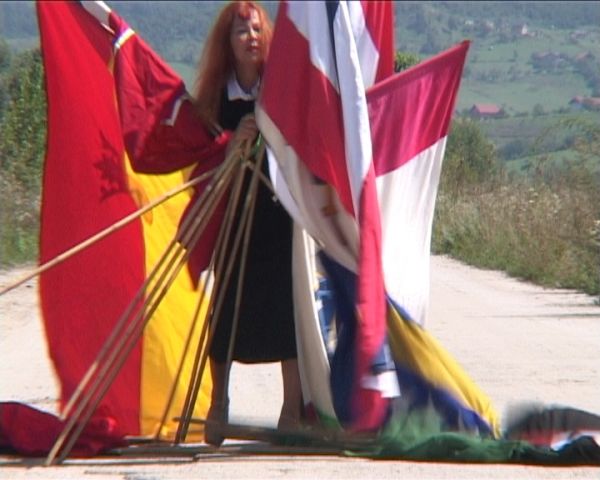
Gordana Anđelić Galić, MANTRA, 2006., video performans 5’12’’
.jpg) Nebojša Šerić Šoba, ISPOD SVIH TIH ZASTAVA, 1998.
Nebojša Šerić Šoba, ISPOD SVIH TIH ZASTAVA, 1998.
BIOGRAPHIES
GORDANA ANĐELIĆ GALIĆ
Born in Mostar in 1949.
Graduated in 1975 from the Faculty for Philosophy, the Department for History, in Sarajevo, and in 1988, from the Academy of Fine Arts, the Department for Painting, in Sarajevo, where she is at the post-graduate studies. Participated at numerous solo and group exhibitions both in the country and abroad. Won several awards for her works. Presently lives and works in Sarajevo.
Selected exhibitions:
Ambiental installation andinterventions, Power plant “Hiseta,” Sarajevo,1999. 48th Venice Bien-nial, Italian pavilion/Program ORESTE, Venice, Italy, 1999. UNDER CONSTRUCTION, SCCA-Sarajevo Third Annual Exhibition, Facade of the National Gallery B&H, Sarajevo, curatorin Dunja Blazevic/, 2001. XXI Biennale d’ Alexandrie, Alexandrie / Egypt, 2001. European Contemporary Art. The Art of the Balkan Countries, State Museum of Contemporary Art, Thessaloniki,Greece,/curatorin Meliha Husdzinovic/, 2003. In transition, National Gallery of Bosnia & Herzegovina, Sarajevo, 2004. Passage d`Europe, Saint-Etienne, France / curator Dr. Lorand Hegyi/, 2007. 48th October salon, Belgrade, Serbia, (curator Dr.Lorand Hegyi), 2008. Micro-narratives, Contemporary Art Museum, Saint-Etienne, France, 2008. SpaPort, International contemporary art exhibition, Banja Luka, BiH, 2009/2010. Transitland, Berlin, Budapest, Madrid, Trieste, 2009. Gender check, MU-MOK Museum Moderner Kunst Stiftung Ludwig, Wien, Austria,/curatorin Bojana Pejic/, 2010.
Gender check, Zacheta Gallery, Warsawa, Poland/curatorin Bojana Pejic/, 2010. Fatamorgana, Uyghur yurt, Gobi desert, China, 2010. “Nomadic party”, ARKO Art Center, Seoul, South Korea/ curator Park,Byoung-Uk/. 2011. Bosnia and Herzegovina Searching for Lost Identity, P-74 Center and Gallery, Ljubljana. 2011 Washing, /video performance/, Mostar, curator AbArt Mostar, 2012. Dowry/Miraz, MSUM Ljubljana, Trieste Contamporanea, CZKDC. Belgrade, Collegium artisticum, Sarajevo(2013), curatorin Dunja Blazevic
MAJA BAJEVIĆ
Born in Sarajevo in 1967.
Her work, performative in many ways, ranges from video,installation, performance and sound to text, crafts, drawing, printmaking, machinery and photography.
She has been invited to take part in some of the most important exhibitions of the 1990s and 2000s, includingManifesta (2000), Documenta (2007), and the Istanbul (2001) and Venice (2003) Biennials. She has had solo exhibitions at PS1, MoMA, New York (2004); Moderna Museet, Stock-holm (2005); Fondazione Bevilacqua La Masa, Venice (2008) Reina Sofia, Madrid (2011); DAAD gallery, Berlin (2012), The James gallery, CUNY, New York, (2012 / 2013) to mention but a few. Bajevic was the holder of the Collegium Helveticum residency in Zurich (2001); DAAD residency, Berlin (2007) and IASPIS residency, Stockholm (2009). She has been teaching at the MA studies of l’Ecole Nationale des Beaux-Arts, Lyon(2001); Università luav di Venezia, BA and MA
2004 – 2008); MA studies, Bauhaus university, Weimar, Germany (2010). She currently lives in Sarajevo.
IGOR BOŠNJAK
Born in Sarajevo in 1981.
He is mainly working within the fields of film, video, installation & photography. Also works as a video curator & theoretician. Currently works as a assistant professor at Academy of Visual Arts in Trebinje. In 2005 he finished Academy of Visual Arts (BA) in Trebinje, Department of Painting. From 2006 he is a founder and the curator of the international namaTREba project biennial. From 2007 to 2011 he finished (MA) and studied (PhD) Interdisciplinary studies, Theory of Art & Media Department at the University of Arts in Belgrade, Serbia.
Currently lives and works in Trebinje (B&H).
MLADEN MILJANOVIĆ
Born in Zenica in 1981.
Graduated in 2006 from the Academy of Arts, the Department for Painting, in Banja Luka. Works as assistant professor on the subjects Inter-medial Research and Theory of Space at the Academy of Arts in Banja Luka. The recipient of Zvono 2007 Award of the Center for Contemporary Art in Sarajevo. Participated at several group exhibitions and workshops in the country and abroad. Selected solo exhibitions:
“The Garden of Delights” National Gallery BiH, Sarajevo (BiH), 2014; “The Garden of Delights” Museum of Contemporary Art RS, Banja Luka (BiH), 2014;”The Garden of Delights” 55th “la Bi-ennale di Venezia” BiH Pavilion at Palazzo Malipiero, Venice (Italy), 2013; “Show Where it Hurts With Your Hand” DADO Gallery for Contemporary Art, Cetinje (Montenegro), 2013; “Good Night - State of Body” MC gallery, New York (USA), 2013; “Good Night - State of Body” A+A gallery, Venice (Italy), 2012; “Indigo Power” Marin gallery, Umag (Croatia), 2012; “Good Night - State of Body” HDLU (New media gallery), Zagreb (Croatia), 2012; “Taxi to Berlin“, Antje Wachs gallery, Berlin (Germany), 2011; “Museum Service”, MUMOK, Museum Modern Kunst Stiftung Ludwig Wien, (Austria), 2010; “Sarajevo Service”, National Gallery of B&H - Sarajevo, (B&H), 2010; “KILL“ work in public space, Le mur Saint Martin, Paris (France), 2010; “Occupational therapy”, Center in galerija P74, Ljubljana (Slovenia), 2009; “Holiday of discomfort “, Antje Wachs gallery, Berlin (Germany), 2009; “Sit-no from I serve art “, Duplex gallery, Sarajevo (B&H), 2009; “Occupational therapy” MOCA of RS, Banja Luka (B&H), 2008/09; “I serve art” National Gallery of BiH, Sarajevo (B&H), 2008; “Occupo”, Neue Galerie Graz, Graz (Austria), 2007; “Relations”, FABRIK culture – Hegenheim (France), 2007; “I serve art” ex military base Vrbas, Banja Luka (B&H), 2007
DAMIR NIKŠIĆ
Born in Brezovo Polje near Brčko (B&H) in 1970.
Studied at the Academy of Fine Arts in Sarajevo, Milan and Bologna, and graduated in 2000 from the Academy of Fine Arts, the Department for Painting in Sarajevo. In the period, 2000-2004, undertook the post-graduate studies at the University of Arizona, USA. In 2003, exhibited at the Venice Biennale. He obtained his MA degree in fine arts and art history in 2004. He taught at the Northwestern University in Evanston near Chicago, USA. He was a member of the group Maxu-min. Currently lives in Sarajevo.
NEBOJŠA ŠERIĆ SHOBA
Rođen 1968. u Sarajevu.
Studirao na Akademiji likovnih umjetnosti u Sarajevu 1989 – 1992. 1999.je preselio u Amsterdam gdje je na Rijksakademie pohađao, internacionalni dvogodišnji rezdencijalni program.
Izlagao je u muzejima i galerijama širom svijeta, među kojima su Musee d’Art Moderne de la Ville, Pariz; Jeude Paume, Pariz, Francuska; Kunsthalle Bern, Bern, Švicarska; Museum moderner Kunst Stiftung Ludwig, Beč, Austrija ; Deutsches Hygiene Museum, Dresden, Kunstmuseum Bochum, Njemačka; De Appel, Amsterdam, Holandija; Moderna Museet, Štokholm, Švedska; Creative Time, New York City; Exit Art, New York City, Dumbo Arts Center, New York City; National Gallery of Victoria, Melbourne, Australija; 50 Venecijansko bijenale (2003), Venecija, Italija; MASS MoCA, North Adams, MA, and P.S. 1, New York City
Živi i radi u New Yorku.
FRANKOVIĆ AND FRANKOVIĆ
JADRAN DADO FRANKOVIĆ & ORSAT FRANKOVIĆ
19.9. - 8.11.2015.
Gallery Dulčić Masle Pultika & Atelier Pulitika
Author of the exhibition: Andrija Seifried
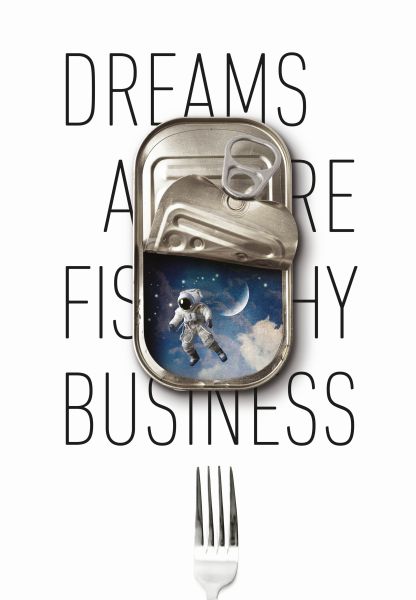
Orsat Franković, Konzerva
The exhibition Franković and Frankovic by father and a son, Jadran Dado Franković and Orsat Frankovic has been open in Gallery Dulcic Masle Pulitika on Saturday, 19th September. The exhibition has two parts, in Gallery Dulcic Masle Pulitika are paintings by Jadran Dado Frankovic and in Atelier Pulitika are posters by Orsat Frankovic. The exhibition will be on view until Sunday, 25th October.
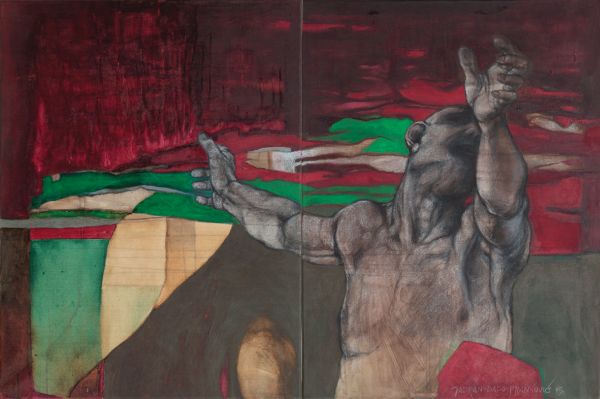
Jadran Dado Franković
Dado’s incontrovertible wish in this exhibition series is connected by one and the same idea – the idea of the “brave new world”. It is undisputable that the artist is led by the need and desire to bypass rules and canons, dictates and all and any constraints that might be forced upon him. Perhaps unconsciously, Dado takes the city as a stage of wonderful scenes and uncommon relations of past and present. Andrija Seifried
As is always at work in the applied arts, the authorial verification and assimilation of the original, here with the graphic clarificationof the original and poster style advertising, so Orsat Franković with his ingenious visual solutions, in the best manner of the world approaches placed in the Swiss monthly Graphis, achieved an interpretation of Spartan purity replete with information. There is a different approach to the human figure in the mixed media of painter Jadran franković. The occasional ironical interpertation of this motif, as in the painting of the female patron of the city Blaženka/Blaisette (2015) does not stop the author from addressing in the figuration a concrete person, personalised even when it has the attributes of mechanical puppet, as in Bride (2010). Vesna Delić Gozze
What can clearly be seen in this relatively small scale exhibition is the breadth of interest and the scope of the work. There are major tasks for commercial clients, complex visual identities that include modular festival posters occupying the traditional advertising locations. There are conceptually refined posters for small projects by clients from culture and the arts (New Life Theatre for the Blind and Partially Sighted, for HDLU) and there are self-initiated works, almost at the level of the illustration in which the artist uses the design medium to express some idea visually (Adam and Eve). In addition he will sometimes speak out in the language of design to refer to certain social issues and current problems, as in Euphoria, 2008 or Familyset – in response to the referendum about marriage of 2013. Dejan Kršić
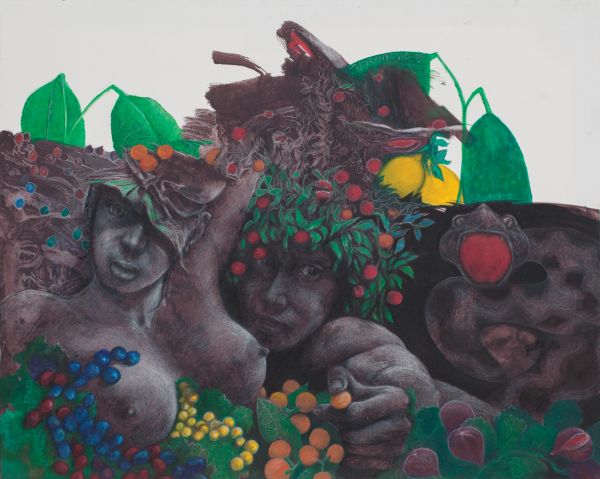
Jadran Dado Franković, Rajski vrt
BIOGRAPHY:
Orsat Franković
Orsat Franković was born in 1971 in Dubrovnik, where he attended both elementary and secondary school. He took a degree in 1995 at the Design School of the Architecture Faculty of Zagreb University and took a master’s in 1997 at the Royal College of Art in London.
He has been involved in graphic design since his student days. From 2001 he was the creative head of Studio Laboratorium, of which he was the joint founder, and since 2012 has been the sole manager of Flomaster, which he founded on his own.
He is the winner of numerous international and domestic awards and prizes: the Icograda Excellence Award, AICA Award, European Design Award, Premio Asiago per l’arte philatelica, Red Dot, iF-Communication Award, Commendation of the Art Directors Club of NY, Perfect 10 Award, MIAF Gold, Good Design Award, London International Award, ZGRAF Grand Prix…
His works have been featured in a number of international publications, such as Eye, Creative Review, ID, Novum, Print, How, Graphis, +Design and Communication Arts.
He has exhibited in Zagreb, Dubrovnik, Rovinj, London and Turin.
He has created a number of very well received design concepts, visual identities, posters, catalogues, monographs, journals and packaging for the most diverse clients, as well as 150 postage stamps for the postal authorities of Croatia, Belgium and Bosnia and Herzegovina.
Jadran Dado Franković
Jadran Dado Franković was born in 1950 in Dubrovnik. He had his first experiences in art in elementary school from his then teacher, Antun Masle. In Dubrovnik he attended secondary nautical college, after which he moved to Split to study at the Economics College.
Most of his career has been that of a general designer, dealing with interior design and furnishing and graphic design. From 1985 he worked as corporate designer for Dubrovkinja. He has created numerous visual identities, posters for exhibitions and theatrical performances of the Marin Držić and Lero theatres. He has produced a number of well-received set designs and exhibition set-ups. In the eighties he worked as graphic editor for the journal for young people Laus.
He has also been engaged from his childhood on in painting, and has had solo shows in Dubrovnik (1971, 1972, 1973, 1974, 1975, 1977 and 1983), in Dusseldorf in 1977 (with Josip Škerlj), in Novi Sad in 1988, in Subotica in 1989 and in Ljubljana in 1992.
He has taken part in collective exhibitions in Dubrovnik, Mali Lošinj, Skopje, Dusseldorf, Sarajevo, Banja Luka, Belgrade and Novi Sad. He has taken part in the Bardača Art-Ecology Colony.
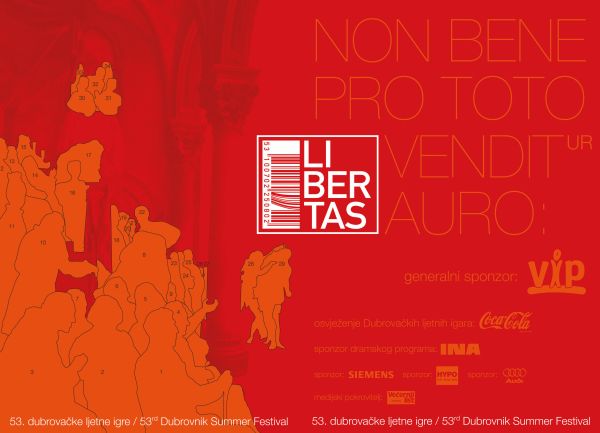
Orsat Franković, 53. DLJI, 2002.
ROMANO CAGNONI
“Križanja CROSSROADS Crocevie _ Dubrovnik & Croatia”
15.8. - 15.9.2015.
Author of the exhibition: Ivana Hladilo Orsoni
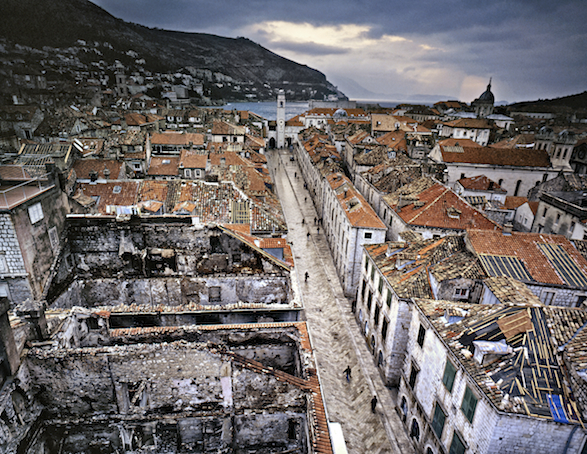 Dubrovnik, Stradun 1991.
Dubrovnik, Stradun 1991.
"Crossing CROSSROADS Crocevie _ Dubrovnik & Croatia " is a traveling exhibition Romana Cagnonija that for the first time in one place exhibits photographs of Dubrovnik and Croatian made by 1991/1992 . years using a large format camera - ' banco ottico.
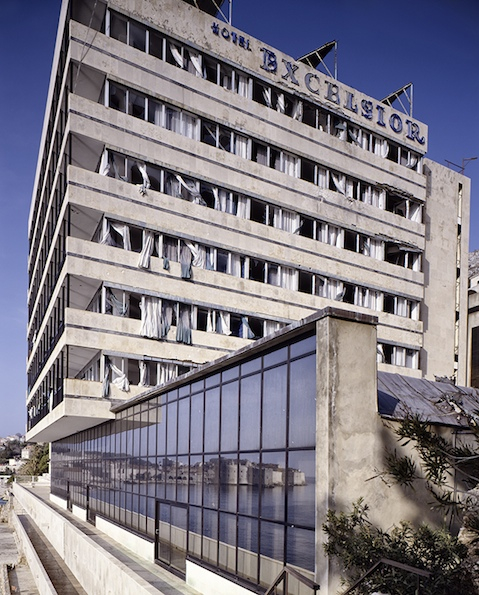
Excelsior
Romano Cagnoni , one of the world's most famous living photographer who more than half a century his work zabilježuje human history , coming to Croatia and Dubrovnik in late 1991 in order to uniquely recorded the destruction of cultural heritage.
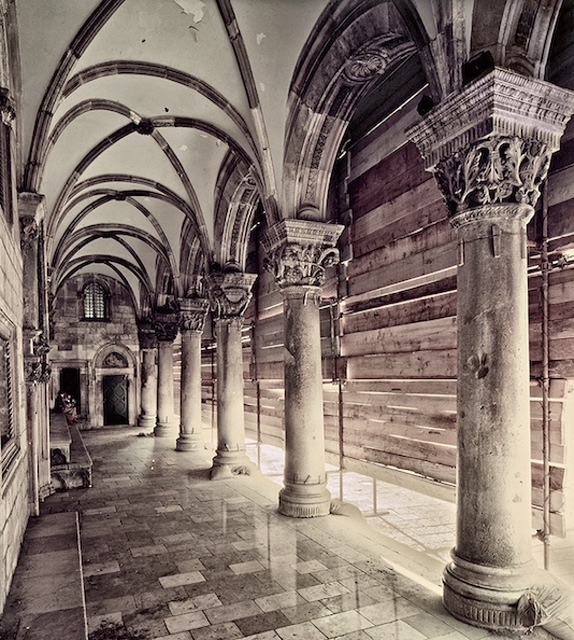 Ispred Kneževa dvora
Ispred Kneževa dvora
Biography:
Romano Cagnoni is an international, award-winning photographer, known as one of the foremost photographers of the 20th century. His photographs have been featured on the cover and front page of nearly every significant news magazine and paper in Europe and the United States. He is most known for his documentary work of the wars and conflicts around the globe. Throughout his career he has delineated intellectually stimulating images of ourselves, the conditions that define our existence and our very hopes of transforming it.
His professional career began when he moved to London in 1958. where he lived like a protagonist of a great season of international photojournalism , having his pictures on the covers of major magazines in Europe and USA as Life, Time Magazine, Newsweek.
Known for his documentary work of war areas and areas where are some international conflicts around the world, Cagnoni still today with his photographs offers the necessary pause for thought , the moment of conscience , and historical situations that risk their loss in speed and excessive amounts of visual media consumption.
TRANSCENDENCIJE
LADA VLAINIĆ
7th August - 4th October 2015
Curator: mr. sc. Vesna Delić Gozze, prof.
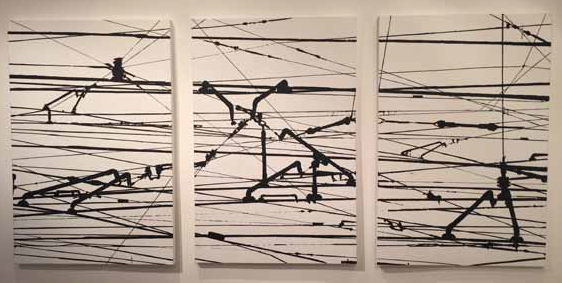
On the surface of the picture, by setting, resetting or jointing, in a lacy network of black and white convergences and some entirely personal invisible musical scales in selected details of the aerial conduits for electricity or telecommunications, Lada Vlainić fills the space of the white that she selectively touches, with pencil or brush. The graphism of the black and white relations from drawings composed of the recognisable parts of cables and electrical fittings creates a rhythm of mainly angular patterns that with their own logic vary the systems of the grid diagram. With the author’s selection of a segment of the seen, the interweavings are turned into patterns of some softer version of a graph, into staves of parallel lines and notations of the sometimes curved lines of the guides of their own trajectories.
Vesna Delić Gozze
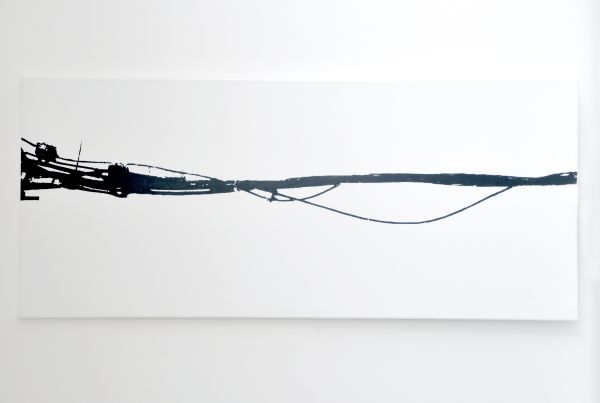 EM 18
EM 18
Lada Vlainić is one of those artists who do not work with great facility. Quandaries and dilemmas and doubts, as well as sincere inquisitiveness and persistence in confronting the
motif and its possible interpretations characterise the more than 10 years of her work. Trained
as an engineer, professionally engaged in graphic design, she possesses the essential dimension of a feeling for measure in art, so rare in the current world that is crammed with all
kinds and forms of visual hyperbole. Her works pass through the rigorous selection procedure of the international jury that found reasons in her drawings to present them to the public in several successive Biennials, and to award them with one of the three chief prizes, to wit, the City of Plzen Prize. But this was not strong enough recommendation to attract the attention of chroniclers of visual events in this country, or of domestic galleries either. Finally however she got the chance to exhibition part of her work at a solo show in Split, and recently again in the Peščenica Culture Centre Gallery, Zagreb. But these were shows with constraints of space and had no reverberations in the professional public. Hence the exhibition in the Dubrovnik
Museum of Modern and Contemporary Art is an outstanding opportunity for more detailed
familiarisation with the work of this interesting artist.
Ivan Doroghy
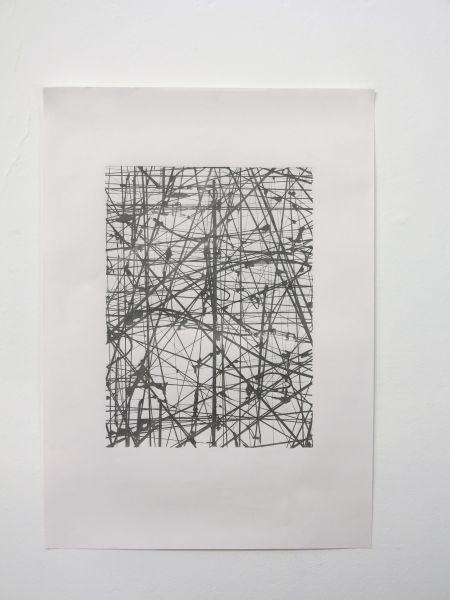
EK3
Biography:
The painter and graphic designer, Lada Vlainić was born in Split in 1963, and graduated from the Fakultet građevinskih znanosti in Zagreb. She is a member of the Croatian community of independent artists, the Croatian Designers Society and the Croatian Society of Film Workers. Her works, except in Croatia she exhibited in the Czech Republic, Germany, Slovakia and Poland.
IVAN POSAVEC (1951.)
A PHOTOGRAPHER'S MEASURE OF THINGS (ATELIER PULITIKA)
FACE SHINING IN THE MOON (GALLERY DULČIĆ MASLE PULITIKA)
3th July - 13th August 2015
Curator: mr. sc. Vesna Delić Gozze
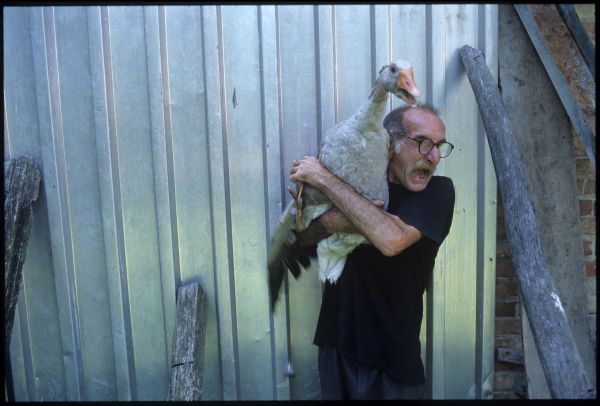
The Greeting from Dužica 2006
The exhibition of one of the best contemporary Croatian photographers, Ivan Posavec, has been open on Friday, 3th July in Gallery Dulcic Masle Pulitika. The exhibition has two parts, in Gallery Dulcic Masle Pulitika named Face Shining in the Moon and in Atelier Pulitika named A Photographer’s Measure of Things, curated by Vesna Delić Gozze.
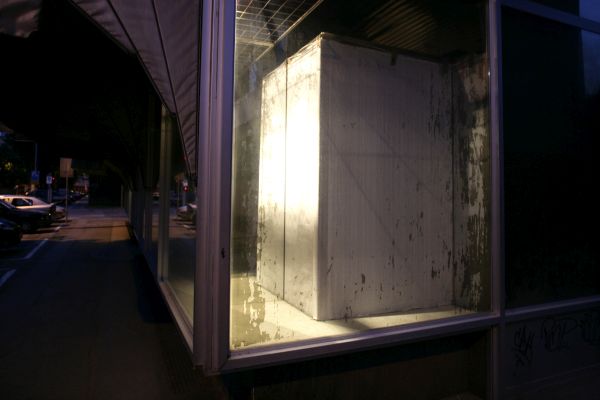
Zagreb 29.08.2008.
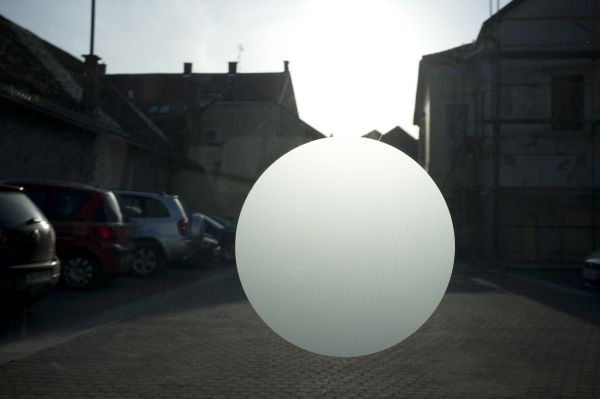
The Keep Your Secret 17.03.2015.
The creative oeuvre of Ivan Posavec is a synonym for an unmatched standard of vitality of motif and compositional measure determined by an innate aesthetic of the frame that has never ever turned into some vacuous form of art for art’s sake. With his sensitivity to motif, his empathy for the object recorded by the camera, Posavec has become an irreplaceable advocate for those in front of the lens who cannot be heard and of what was already there. The recorded fortunate moment of Posavec is that happy Cartier-Bressonesque unmistakable moment of identity between its attainment out of a combination of life’s circumstances and the photographer’s decision to take action.
mr. sc. Vesna Delić Gozze
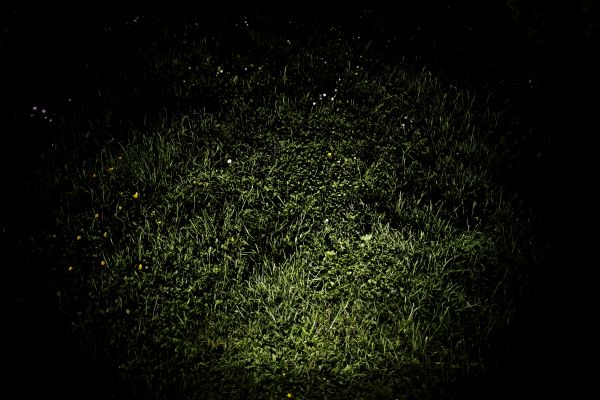
Zagreb 21.04.2009.
Biografija:
Ivan Posavec je jedan od najistaknutijih fotografa srednje generacije, koji je u fotografiji razvio poseban, izrazito poetičan izričaj. Rođen je 1951. u Dužici pokraj Siska. Godine 1969. dolazi na studij veterine u Zagreb, koji prekida 1974. kao apsolvent, da bi se posvetio fotografiji. Diplomira 1980. filmsko snimanje u klasi prof. Nikole Tanhofera na Akademiji za kazalište, film i televiziju u Zagrebu, a 1984. magistrira fotografiju kod prof. Dragoljuba Kažića na Akademiji primenjenih umetnosti u Beogradu. Radovi Ivana Posavca nalaze se u zbirkama Muzeja suvremene umjetnosti i Muzej za umjetnost i obrt u Zagrebu te Muzeja moderne i suvremene umjetnosti u Rijeci. Dobitnik je nagrade «Tošo Dabac» 1992., a 2003. Nagrade grada Zagreba te još pedesetak drugih nagrada. S kolegom Mijom Vesovićem 1979. osniva grupu MO. Član je ULUPUH-a, a već trideset godina bavi se novinskom fotografijom.
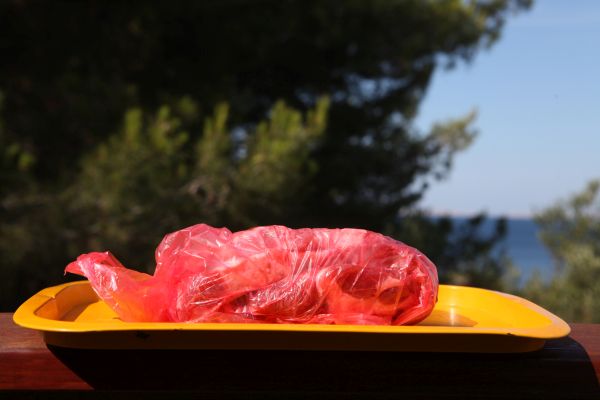
Murter 30.06.2013.
JOSIP LALIĆ (1867 – 1953)
DUBROVNIK PERIOD
June 7th –30th, 2015
Curated by: Rozana Vojvoda, PhD
Sanja Žaja Vrbica, PhD

Shipyard in Lapad
The exhibition covers “the Dubrovnik period” (ca 1902-1919) of Josip Lalić, Split artist educated in Venice, creative period in which he made his best works. The exhibits are owned by the Museum of Modern and Contemporary Art Dubrovnik, Diocesan Collection, Sigurata Convent, Konavle Local History Museum, Cultural History Museum from Dubrovnik and numerous private collections from Dubrovnik and Split.
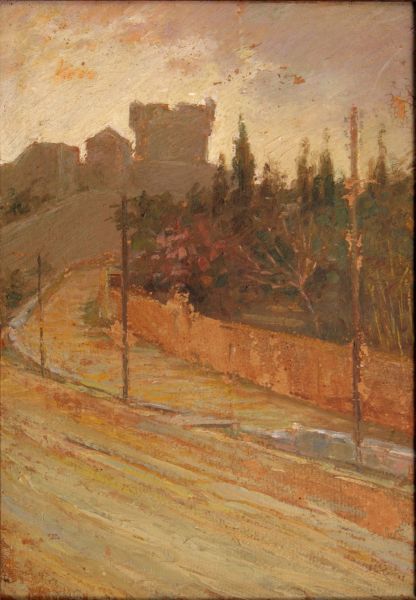
The Old Road Behind the City
From an analysis of the works preserved in Dubrovnik collections we can distinguish a number of groups according to their subjects. There were religious works, views, and genre scenes from the streets of Dubrovnik, an allegory of Mercy, and a work inspired by national tradition according to the programme of the Medulić group, in which he had been active since its founding in 1908, continuing to the last show in 1919. The numbers of works of figures in traditional attire, of Dubrovnik porters, are a kind of bow to the art market inclined to scenes of life from the streets of unknown cities, for these regions were for many foreign visitors at the beginning of the 20th century still marked as exotic parts of Europe.
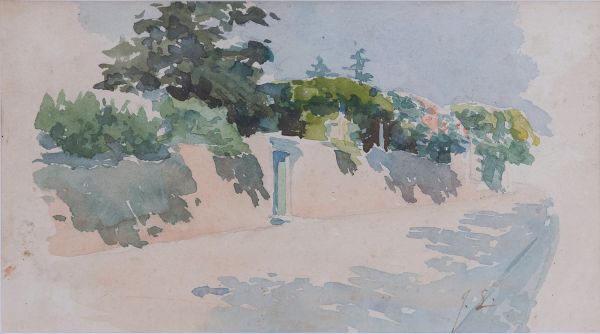
Road from Pile
In the intimately toned Dubrovnik landscapes and vistas, Lalić in fact achieves his best results, in his own version of Impressionism, seen in the manner of composing with unexpected intersections shown by the edges of the frame (particularly in the depictions of the Mediterranean vegetation) with the free brushwork, the light palette and in the revisiting of a motif in different times of the year (the Road from Pile, Sveti Jakov/ Saint James). Painting in small formats, often not on canvases but on cardboard supports, the areas of Gruž, Lapad, fragments of nature, Lalić explores sensations of light and actually it is just in these melancholy scenes that the real fineness of the painter’s nature is seen. In his landscapes and vistas, Josip Lalić can be seen as a truly unjustly neglected painter, who with his gaze of the newcomer, the stranger, wrote an extremely interesting chapter in the development of Dubrovnik artistic thinking.
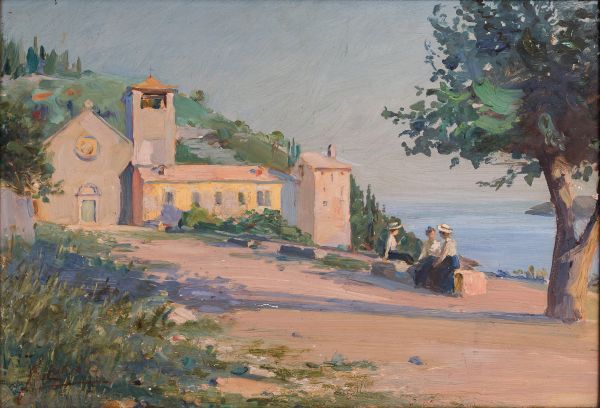
Saint James
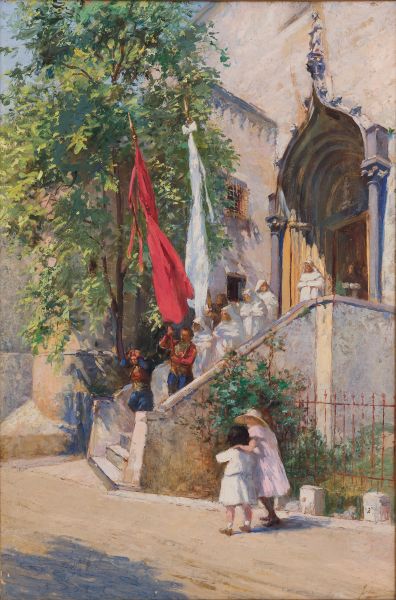
Procession
BIOGRAPHY:
Josip Lalić was born on September 13, 1867, in Split, in a well-to-do middle class family. From 1887 to 1893 he studied at the Academy of Fine Arts in Venice (where his teachers were Alessandri, D’Andrea and Molmenti). Around 1896 he moved to Milan, where for some time he worked for Vallardi, a publisher, making drawings and watercolours for their printed works. After Milan, he moved to Paris, where he worked on religious paintings and portraits. He married the painter Elisa Duramani and in 1891 returned to Split. In April 1901 he had a joint exhibition with Emanuel Vidović in the foyer of the Split National Theatre. It was most probably in around 1902 that he moved to Dubrovnik, for in 1903 he had his first Dubrovnik commission for a religious work, The Entombment, for the Church of St Blaise. In 1907 he had two civic commissions: for an allegory of Mercy in the Gothic lunette of the side entrance to the Rector’s Palace, and a picture of St Blaise for the soup kitchen in Dubrovnik. He did a number of scenes of people in traditional attire in city settings, and Impressionist and lyrical panoramas and landscapes of Dubrovnik. He exhibited with the artists’ associations Medulić and Lada. He lived in Dubrovnik until 1919, after which he moved to Rome, where in the artistic studios of the Strohl-Fern Villa he painted until his old age, exhibiting increasingly little, however. In 1928 the Gallery of Modern Art in Rome bought fourteen of Lalić’s works. He died in Rome on February 13, 1953.
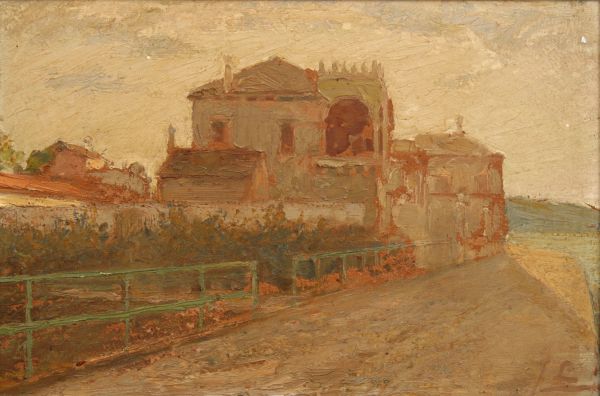
Hotel Lapad
CONTEMPORARY JAPANESE GRAPHIC ART
32 ARTISTS
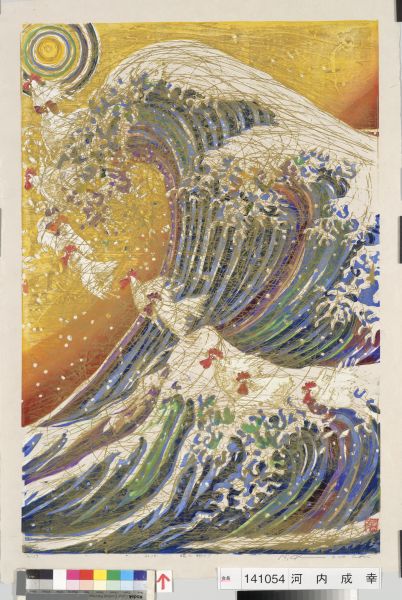
Seiko Kawachi
As a World Heritage Site with history dating back to the Seventh Century Dubrovnik is well-known in Japan. It is a great honor to have the opportunity to exhibit Japanese contemporary prints in such a richly historical place. - the Chairman of Japan Print Association, Teruo Isomi
The Japan Print Association, of which the majority of the exhibitors are members, is an organization of our country’s leading print artists, and it was founded in 1931. Currently, we have 254 honorary and regular members, as well as 173 associate members, and from our founding until today, we have led our country’s print world, holding exhibitions of works by the public and other events nearly every year, and this exhibition of prints by the artists which form the core of our organization should demonstrate the current state of modern prints in our country. - Tetsuo Miki Direktor Museum of Ceramic Art, Hyogo
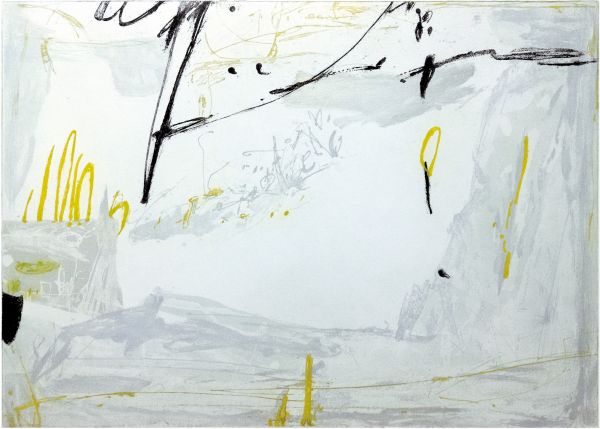
Tomko Baba
The density of meanings that is revealed in the layers and the purity of expression are still present in the area of the Japanese print even when the print is not made on traditional washi, a paper made by hand, for the precision has come into being out of the respect for the moment and the interlocutor, in the concentration on transitory happenstance via an unrepeatable visual interpretation.- Vesna Delić Gozze
The selection of Japanese graphic art at the exhibition off ers us a certain homogeneity of concept according to the definitions of tradition, freedom of expression, the senses of purpose of artists and creations of original graphic artworks. (...) Dubrovnik Museum of Modern Art is showing a run of consummately executed original prints, the frontiers of which are constantly being tested out in works of extraordinary artists, who show in their works that the top quality print is still an exciting visual language for the current day.- Marina Majić, author of the text in the catalogue
The graphic language of Japanese art is recognised all over the world for the virtuosity of its line, its original messages and masterly handling of the techniques in which these artists express themselves. Many of the ancient and modern techniques that are used in printmaking were developed in fact by Japanese masters. This virtuosity is the outcome of many centuries in which graphic techniques have been developed, symbiotically with the skills of the ancient craft guilds: of the wood carvers, paper producers, makers of brushes, pigments and the tools with which the various techniques of printing are implemented and the publishers who coordinate all the works. – Leon Zakrajšek, author of the text in the catalogue
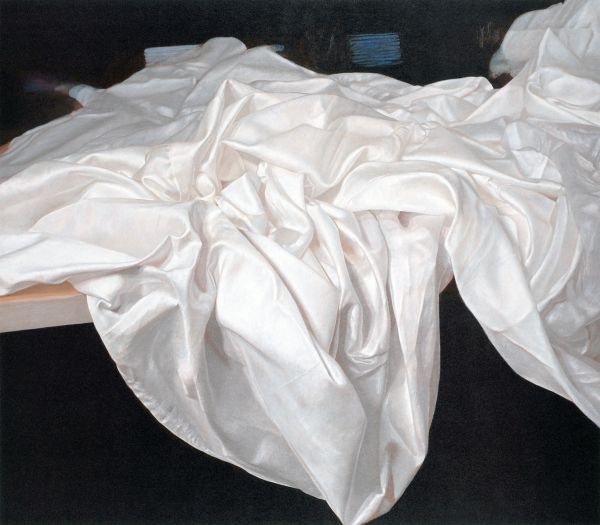
Harumi Sonoyama
32 GRAPHIC ARTISTS:
Junji AMANO, Yoshito ARICHI, Tomoko BABA, Ryuta ENDO, Hiroko FURUYA, Fuki HAMADA, Mitsuru HIRAKI, Ryoji IKEDA, Teruo ISOMI, Yuko IWAKIRI, Seiko KAWACHI, Keisei KOBAYASHI, Noriaki KONDOH, Hisashi KURACHI, Mayumi MORINO, Tetsuya NODA, Marie OKADA, Tadayoshi NAKABAYASHI, Atsuo SAKAZUME, Kuniko SATAKE, Teruyo SATO , Misako SHIMIZU, Harumi SONOYAMA, Hiroyuki SUZUKI, Toshiya SUZUKI, Toru TOHIGUCHI, Shu UENO, Kohei WAKATSUKI, Noriko YAGANISAWA, Nagisa YAGI, Ayomi YOSHIDA, Taisuke YUKI.

Ryuta Endo
CVIJETO BENVENUTOV JOB
METAPHOR OF INFINITY
15th April - 4th June 2015
Curator: Petra Golušić
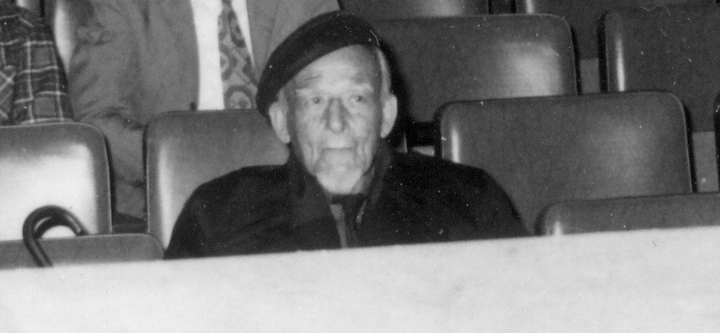
Dvorana sindikata, Cvijeto B. Job
The exhibition Metaphor of Infinity by Cvijeto Benvenutov Job curated by Petra Golusic has been open in Gallery Dulcic Masle Pulitika and Studio Pulitika onWednesday 15th April. The exhibition will be on view until 24th May. On the exhibition is presented 71 sketch as a selection of works from the family heritage and collections of the National Archive in Dubrovnik.
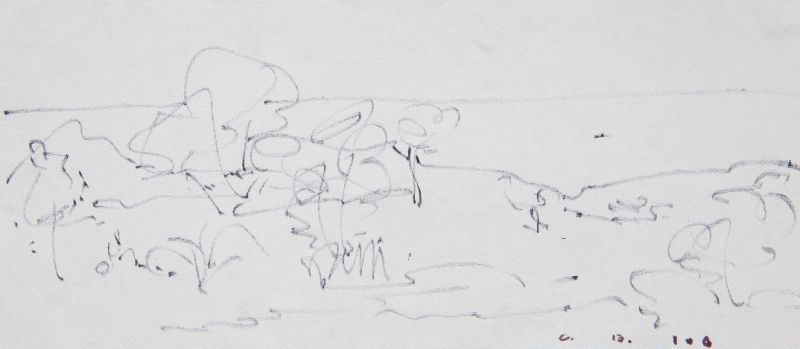
Bez naziva
„The oeuvre The Human Gallery consists of hundreds of striking sketches recorded on little pieces of paper (in black pastel, biro, marker pen...) belonging to various different series. They are dedicated to very young, young and older bluestockings; portraits on red, yellow and blue grounds; theatrical directors and actors; senior and junior officials, technical and auxiliary staff in the theatre; to writers and playwrights; leaders of scientific terms... Job practically obsessively portrayed the ballerina and sculptress Olga Solovjeva. As a result, other female figures in the artrist´s registrations were often similar to her.“ Petra Golušić
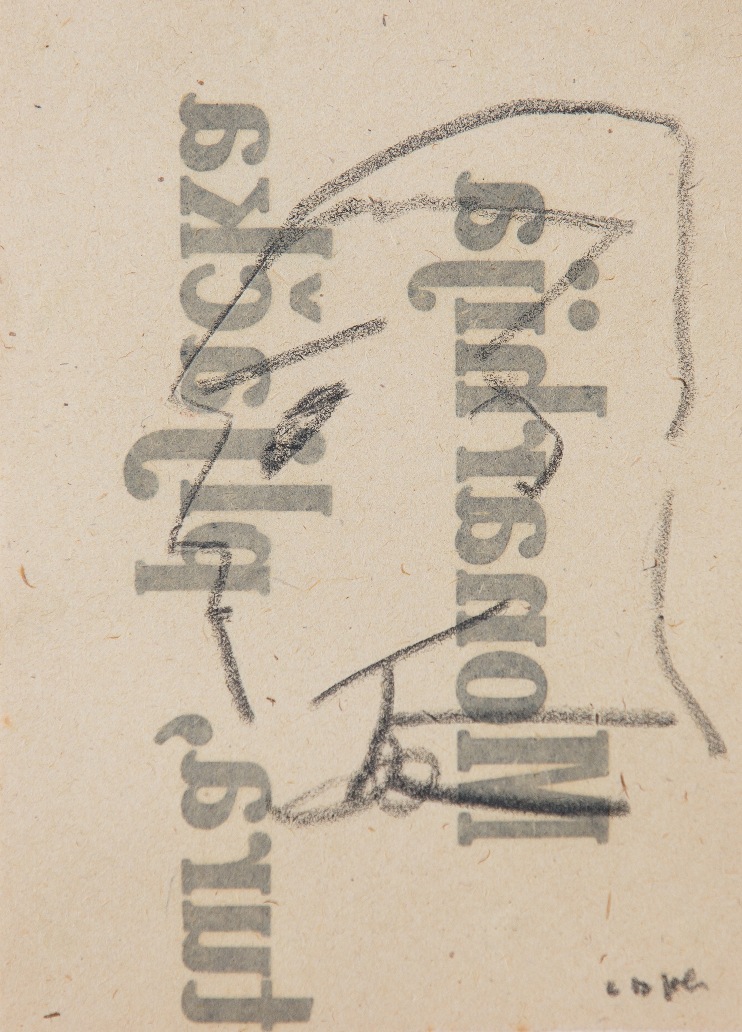
Kazalište, viši činovnici kod režisera
BIOGRAPHY
Cvijeto Benvenutov Job was born in May 18, 1899, in Dubrovnik, where he died, on August 31, 1986. He went to elementary school until 1909, and then enrolled in the State Real High School, attending until 1918. He took a doctor-ate from the Institute for East European History in Vienna. On his return to his native town, he worked at the Real High School, teaching history, French, art, principles of philosophy... For some time he collected the ethnological and cultural heritage of proverbs, popular sayings and so on of Dubrovnik and teh surrounding areas. Job wrote poetry, drew and painted, and was always a citizen active in society and culture.
ANABEL ZANZE (1971.)
CITATI
My world is within black letters and pale yellow grounds.
Spaces are my streets, squares are the spaces between the words
and words are buildings.
Anabel Zanze, 2008
_ulje%20na%20platnu_2013_800600%20mm%20(2).jpg)
Crni diptih (desni dio diptiha)_ulje na platnu
10th April - 31st May 2015
Curator: Petra Golušić
_ulje%20na%20platnu_2013_800600%20mm%20(2).jpg)
Crni diptih (lijevi dio diptiha)_ulje na platnu
"Readability, the conditio sine qua non of every kind of typography, historical and contemporary, is precisely what this artist calls into question, asking the image to take on other meanings, functions and challenges." Nada Beroš
"The artist, both subtly and crisply, refers to the great burdensomeness of the things of the world in which we are immersed as responsible individuals. By the choice of creative texts that she cites (and modifies) Zanze commemorates reality. She indicates – with steady gaze and calm hand – the restlessness and tensions of the world at the turn of the century." Petra Golušić
.jpg)
Fontovi V_ulje na platnu_2009
BIOGRAPHY
Anabel Zanze was born in 1971 in Dubrovnik, where she attended elementary school as well as maths and science high school. In 1991 she enrolled in the Graphic Department of the Academy of Fine Arts in Zagreb, taking her BFA in the class of Ante Kuduz in 1996. Between 1998 and 2004 she taught visual culture in the Marin Držić Elementary School in Dubrovnik. Since 2004. she has lived and worked in Zagreb. She is a member of the Croatian Association of Visual Artists (HDLU) and Croatian Freelance Artists’ Association (HZSU). Anabel Zanze has shown her work at twenty two solo and a large number of collective exhibitions. Her works are to be found in the holdings of: the Modern Gallery in Zagreb, the Museum of Fine Arts in Osijek, the Vjekoslav Karas Gallery in Karlovac Municipal Museum, the Široki Brijeg Museum – Franciscan Gallery, the Juraj Šižgorić Public Library in Šibenik and Hypo Group Alpe Adria in Zagreb and a number of Croatian and foreign private collections. She was included in the book of Sandra Križć Roban Hrvatsko slikarstvo od 1945. do danas. Odgovornost slike u vrijeme nestrpljivog pogleda (Croatian Painting since 1945. Responsibility of the Image in the Time of the Impatient Look). ‘Started with works of textual-visual expression founded on the avant-garde and neo-avant-garde. With techniques of drawings, collages, prints and painting, with rhythmical interchange of letters and ground or series of words and sentences she creates geometrical scenes (Citation, 2005, Tetris, 2009–10). The new series of works, The Book, Parts of Speech, Figures and Double-Faces (2012–14) go on with research into the textual/visual and experimentation with typography, function and meaning.’ / Art Lexicon, The Miroslav Krleža Institute of Lexicography, Zagreb, 2014.jpg)
seminatio_ulje na platnu_2014
ALEKSANDAR BEZINOVIĆ
MOON AND STEEL
March 6th – April 10th, 2015
Curated by: Dr. Rozana Vojvoda

Immortals (Lion of st. Marco)
In his work to date Aleksandar Bezinović has presented as an enigmatic painter with a set of motifs that counts on a fragmentation of reality, with some personal elements and systems of phenomenal things close to mechanisms of dream and the fields of the surreal. A search for identity, whatever that might mean, the domains and dangers of technology, the role of art and science in the totality of their development, and finally the role of man in the constellation of the universe are the big themes that can be seen in the motifs chosen, and yet they have no pretensions to be able to give answers and are void of any overtones of emotionality. In his creative work, the artist is clearly attempting to fathom or at least put into a dialogue what it is that occupies us, what it is that resists analysis or any kind of ultimate answer. Drawing heavily on the tradition of figurative painting, including German Expressionism, Metaphysical Painting, Surrealism, Pop Art, the New Image and post-conceptual painting, in a formal sense Bezinović uses ready-made stencils, words in the construction of the semantic layer of the painting, interrelations and references to works from art history and stylistic periods (Antiquity and the Renaissance perhaps reveal his upbringing and formation in Split), sometimes even getting into fields of the grotesque, and occasionally glancing off kitsch through intellectual parody. In an alliance of opposites and of equal intellectual and emotional intensity, the hybrid worlds, strange and poetic at the same time, of this artist’s paintings are opened up before us.

Immortals (st. Sebastian)
Biography
Aleksandar Bezinović was born on May 16, 1975, in Split, where he graduated from the Applied Art and Design School, graphic design major. In 1993 he enrolled in the painting course of the Academy of Fine Arts in Zagreb, graduating in 1998 in the class of Zlatko Keser. From 1998 to 2013 he was an assistant in the department of wooden polychrome sculpture in the Croatian Conservation Institute. He works on numerous cinematographic and theatrical projects as author, assistant and set painter, and is also employed as illustrator for magazines, storyboards and whiteboard animations. He has shown his work at numerous solo and collective exhibitions in Croatia, Slovenia, France, Germany, Dubai and the USA. He lives and works in Zagreb, and is a member of the artists’ associations HDLU and HZSU.

Imperium (I-400)
NASTA ROJC
1883. - 1964.
A CRITICAL RETROSPECTIVE
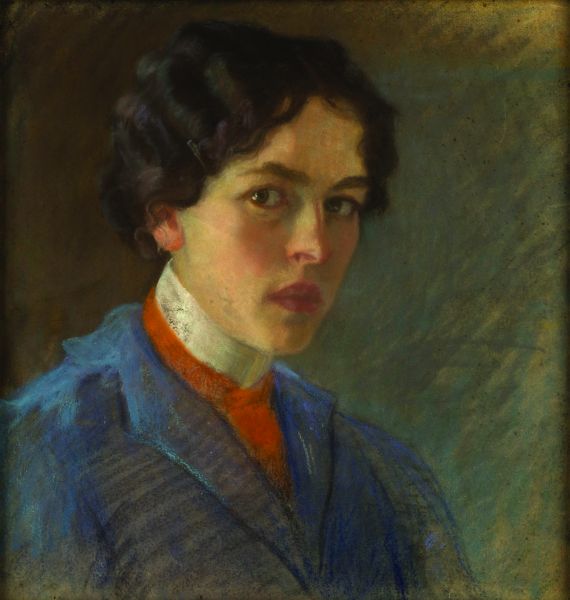
Autoportret, 1915., Gradski muzej Bjelovar
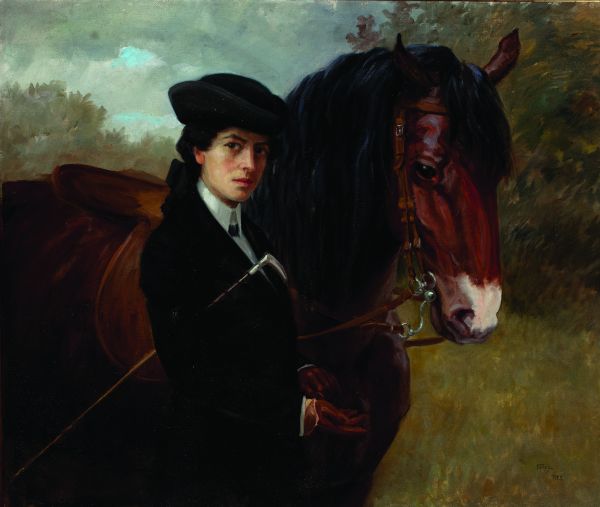
Jahačica - autoportret, 1922., Vl. Moderna galerija, Umjetnina se nalazi u Uredu Predsjednika
AUTHOR OF THE PROJECT:
Art pavilion in zagreb
February 18th – April 4th 2015
Exhibition author :
Ivanka Reberski
Jasminka Poklečki Stošić, director of Art pavilion in Zagreb
Leonida Kovač

Morski pejsaž, 1938., private ownership
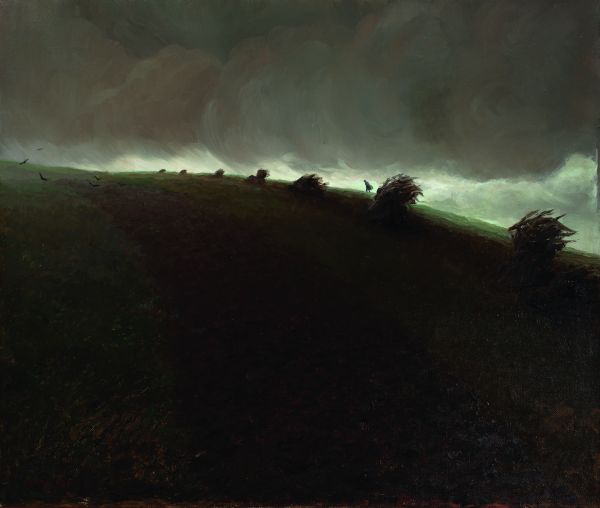
Putnik, 1911., Vl. Moderna galerija
PERO ŠANTIĆ
A METICULOUS CHRONICLE OF SILENCE
Curator: mr.sc. Vesna Delić Gozze, prof.
December 20th 2014 – March 1st 2015
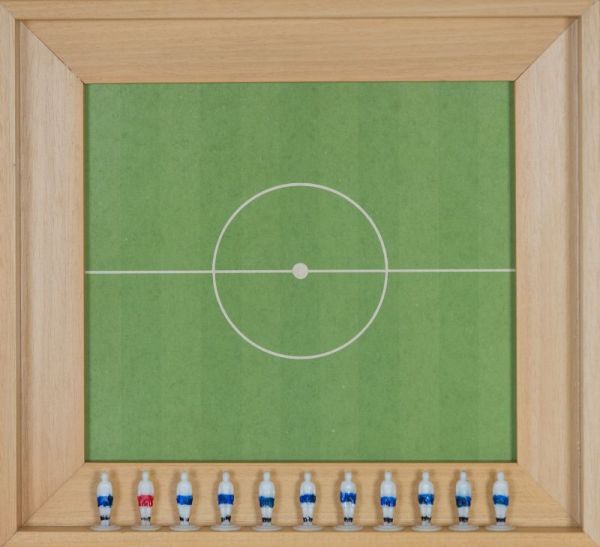
Svjetsko prvenstvo u nogometu, 2014.
The retrospective exhibition A Meticulous Chronicle of Silence of Dubrovnik's painter Pero Šantić has been open in Gallery Dulčić Masle Pulitika and Studio Pulitika at 20th December 2014.
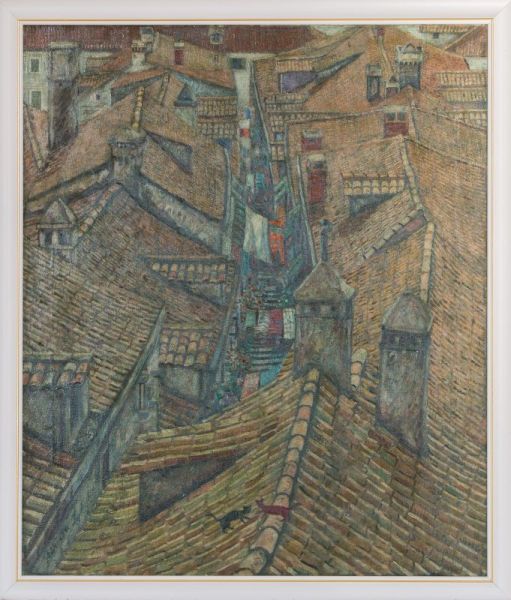
Jugo,1984.
"While the realist approached to detail in a good part of the oeuvre of Šantić’s paintings has no connection with the realism of the whole but brings him close to the naturalism of surrealism, in his drawings, the calligraphy of the stone surface and the primacy of the rural motifs of rough dressed stone via the precision of pen drawing is transferred into a faithful impression of the whole impression of the seen (Pomegranate). The stone landscape, the hamlets, the stone boundary lines are not in Šantić just fences and dividing marks, they are sculptural units with their own stony plants (Stone Gate)."
Vesna Delić Gozze
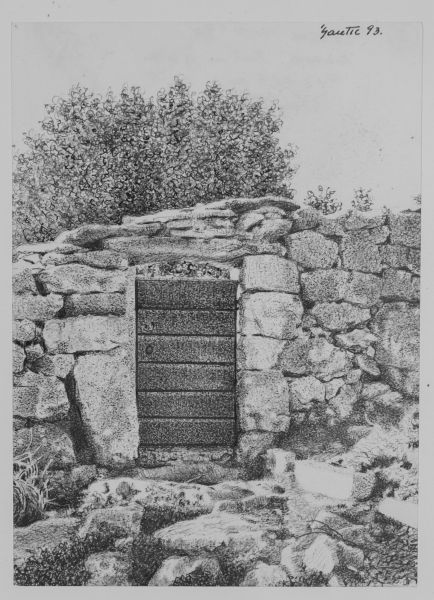
Seoski motiv, 1993.
Šantić is simply a unique poetic realist who during his endlessly long walks around the paths and landscapes of Konavle and Dubrovačko primorje has discovered the beauty of the sturdy dry stone boundary walls that like a stalwart guard protect the plants growing on the modest little clumps of nurturing earth. He respects and marvels at this beauty, conveying it with fascinating skill and the meticulous care of the medieval miniaturist.
Sonja Seferović
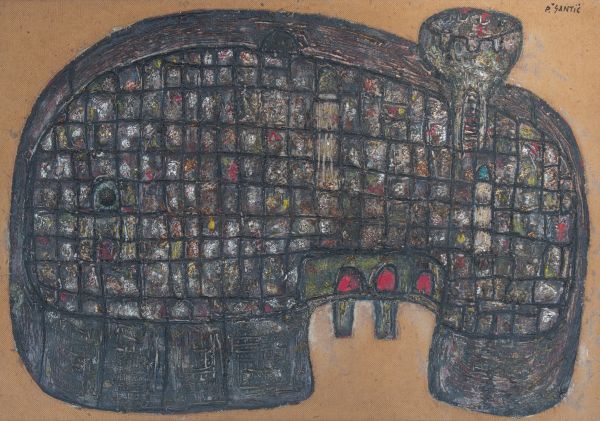
Dubrovnik, 1998.
BIOGRAFIJA
Pero Šantić rođen je u vojvođanskom Velikom Bečkereku, današnjem Zrenjaninu, u Srbiji, 7. travnja 1938. Osnovnu školu i četiri godine srednje škole, završio u Dubrovniku. Školu za primjenjene umjetnosti u Herceg Novom, Crna Gora, upisuje 1954. u trajanju od pet godina, do 1959. Studirao na Akademiji za primjenjene umjetnosti u Beogradu od 1962. i napušta je, nezadovoljan, 1965. Član ULUH-a (današnji HDLU) Dubrovnik je od 1970. Opredjeljuje se za status slobodnog umjetnika. Živi u Dubrovniku i Austriji.
MIROSLAV KRALJEVIĆ
1885 – 1913
Retrospective

SELF-PORTRAIT WITH DOG, 1910, oil/canvas; 111.7 x 85.7 cm (Photo by: Goran Vranić)
AUTHORS:
Zvonko Maković
Željko Marciuš
Biserka Rauter Plančić
December 11th, 2014 – February 8th 2015
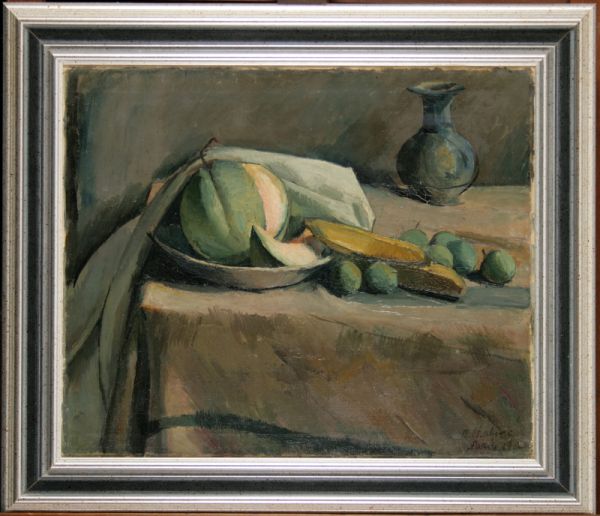
Mrtva priroda s dinjom, 1912.
"The extremely abundant and varied opus by Miroslav Kraljević, concentrated in a mere five years of intense creativity (1908-1913), was a starting point for a series of the great figures of 20th century Croatian painting (Milivoj Uzelac, Marijan Trepše, Vilko Gecan, and Milan Steiner), who defined what he had not managed to achieve because of his premature death. In other words, even as adolescents, they recognized the spirit of a new age, represented by the expressionism that Kraljević intuitively discovered in some of his late works, and they introduced this option into Croatian painting, at first sporadically during World War I, and in its fullest sense in the years immediately after it. Kraljević's greatest contribution to Croatian painting lies in the fact that his work articulated an entire generation, which fully developed those theses which he, due to his short life and effective creation, managed only to outline. No other role model was as important as Miroslav Kraljević to the generation that matured during the World War I and confirmed their expression during the exhibitions of the Zagreb Spring Salon. If we take into consideration that the most valuable part of Kraljević’s art is concentrated in a single year – the last year of his life (1912-1913) – then the power of this art, indeed, has a special meaning."
Zvonko Maković
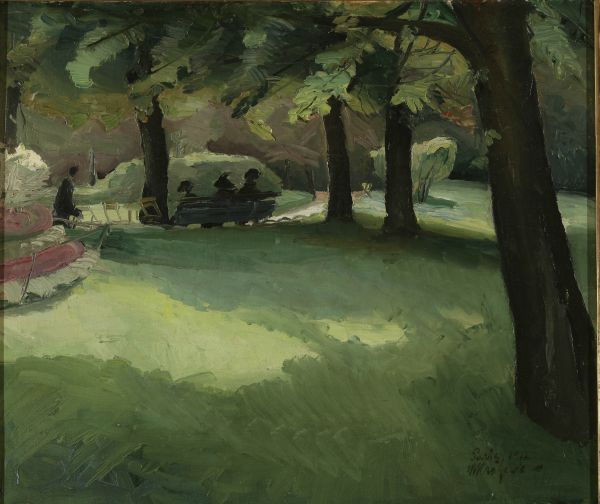
PARC DU LUXEMBOURG, 1911/1912, oil/canvas; 49 x 61 cm, (Photo by: Goran Vranić)
BIOGRAPHY:
1885
Miroslav Kraljević was born into a well-regarded aristocratic family while his father was serving in an administrative post in Gospić.
1888-1903
Miroslav Kraljević completed elementary and high school in Zagreb and Gospić; but he also spent one high-school year in Požega, the home of his father’s family, which he considered his home town.
1904-1905
Miroslav studied law in Vienna and attended a painting course run by George Fischoff.
1906
He abandoned his study of the law and totally dedicated himself to art.
He enrolled in the printmaking school of Mortiz Heymann in Munich.
1907-1909
Miroslav Kraljević enrolled in the Academy of Fine Arts in Munich, class of Hugo von Habermann.
At that time, other Croatian painters were studying in Munich: Josip Račić, Vladimir Becić and Oskar Herman.
His friends at that time were Vladimir Becić, Oskar Herman, Nasta Rojc, Erna Šaj, the Polish - Romanian painter Karl Ewald Olszewski.
1910-1911
After the end of his education in the Academy of Fine Arts in Munich, he returned to Požega, from which, after a short time, he went to Kraljevica, a town on the sea, in the vain hope of being cured of his advanced consumption.
Back to Požega again, he was met by a number of commissions for portraits; his return to his home ground also resulted in a number of outstanding portraits of his family, landscapes, still lifes and animal paintings.
1911
Kraljević exhibited at the exhibition of the Croatian Society of Art in Zagreb, where his outstanding qualities as a painter were observed and highlighted by Izidor Kršnjavi, head of the Religion and Teaching Department, and by poet and essayist Antun Gustav Matoš, without doubt the greatest authority Croatian reviewing and criticism had ever had.
As a result of these successes, he was awarded a scholarship and left for Paris, where he worked at the academy of La Grande Chaumière and painted some of his best portraits, self-portraits, genre scenes and views.
1912
This was a year of euphoric painting and drawing, with a superlative elaboration of previous experience and bold investigations of new ideas and idioms.
At the same time that his talent was burgeoning in Paris, Kraljević increasingly thought of going back home.
His first one-man show in the Ullrich Salon in Zagreb was attended by excellent reviews.
1913
In Zagreb, Miroslav Kraljević died of consumption at the age of 27.
1942
Five Kraljević oil paintings were included in the 23rd Exhibition of the Venice Biennale.
2013
The exhibition Miroslav Kraljević – A Retrospective Exhibition was opened in the Modern Gallery in Zagreb marking the centenary of the artist’s death, constituting the biggest exhibition to date of this Croatian painter of the soul.
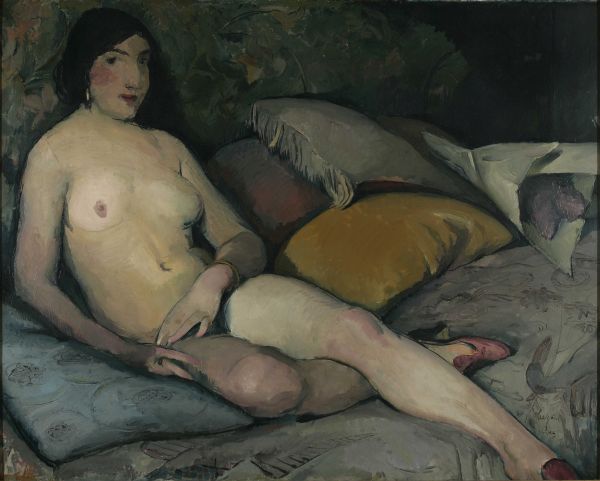
OLYMPIA (LARGE NUDE), 1912, oil/canvas; 89 x 112 cm, (Photo by: Goran Vranić)






